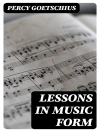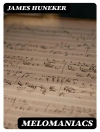In ‘How to Write Music: Musical Orthography, ‘ Clement A. Harris delves into the intricacies of musical notation, providing an insightful guide for both budding and seasoned composers. The book employs a didactic and accessible style, blending theoretical principles with practical exercises to establish a comprehensive understanding of the symbols and structures that form the foundation of music writing. Harris meticulously explores diverse musical forms and the nuances of contemporary composition, situating his work within the broader context of music education and the evolution of notational systems across cultures. Clement A. Harris, a prominent figure in the field of music theory, draws on his extensive experience as both an educator and composer. His background in musicology and dedication to fostering creativity in music students compelled him to produce this instructional manual. By integrating historical context and modern techniques, Harris offers readers a unique perspective on the language of music, highlighting the importance of effective communication in artistry. This essential guide is highly recommended for anyone interested in the art of music composition, from students eager to hone their skills to experienced musicians seeking to refresh their knowledge. ‘How to Write Music: Musical Orthography’ stands as a vital resource in the pursuit of musical expression, inviting readers to engage with the foundational elements that shape their compositions.
Mengenai Pengarang
Clement A. Harris was a composer and music theorist known for his contribution to early 20th-century music education. Although not as widely known as some of his contemporaries, Harris’s work has provided valuable insights into the principles of music notation and composition. His guide, ‘How to Write Music: Musical Orthography, ‘ published in the early 1900s, offers students and composers a structured approach to the complexities of musical notation. Delving into the conventions and practices of Western musical tradition, Harris’s book has been esteemed by scholars for its clarity and precision. Harris’s literary style is systematic and didactic, reflecting his pedagogical intent. The book serves as both a primer for beginners and a reference for those more experienced in the field of music notation. While there is a scarcity of biographical information available about Harris, his work suggests a dedication to the craft of music and an earnest desire to impart his knowledge to others. The lasting relevance of his work can be credited to its meticulous explanations and practical applicability to music composition and education.












